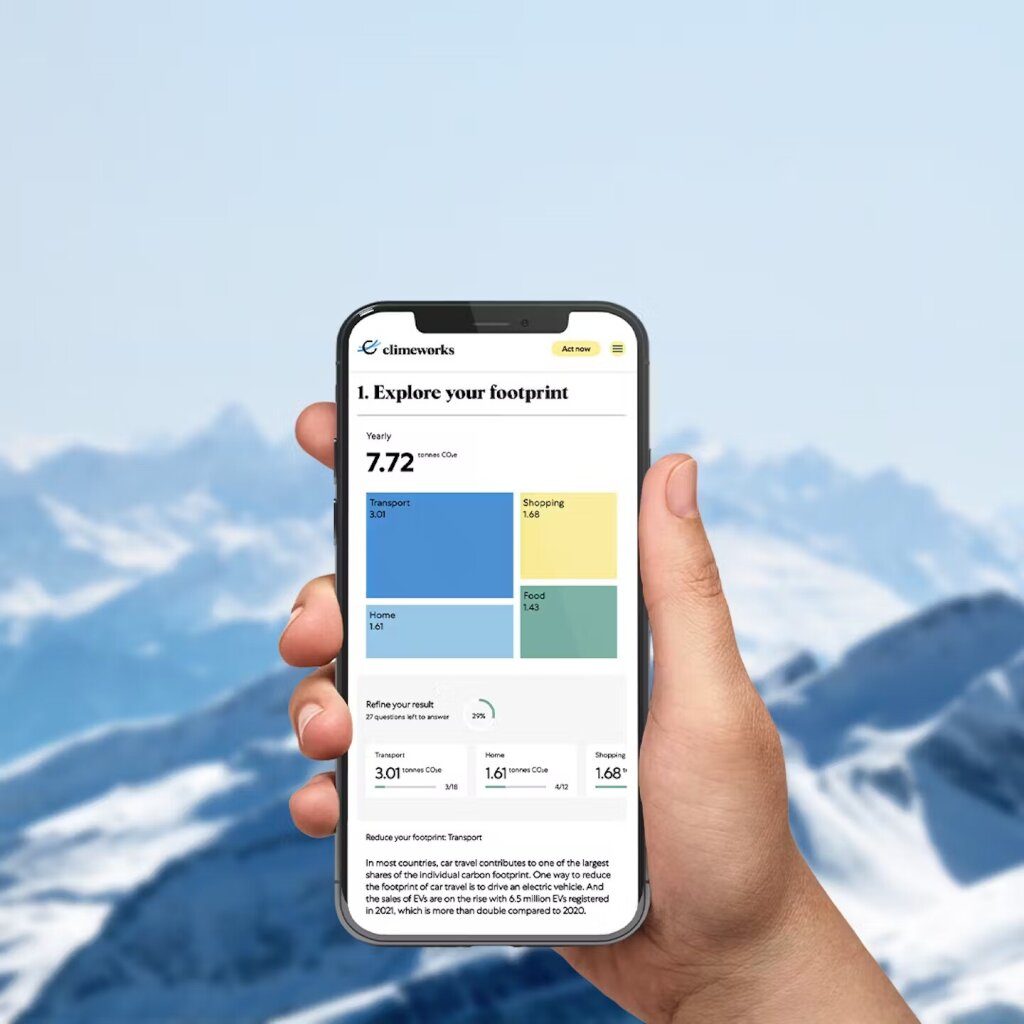What is a carbon footprint?
A carbon footprint measures our impact on the climate in terms of carbon dioxide, or CO₂, released into the atmosphere. It's influenced by our lifestyle choices, such as: how we travel, how much energy we use in our homes, our shopping habits, and even the food we choose to eat. Essentially, the smaller our carbon footprint, the smaller our impact on the climate.
How much of it should be removed?
The latest IPCC report states that on top of emissions reductions, we need to actively remove CO₂ from the atmosphere to limit global warming to 1.5°C. This has also been recognized by the Science Based Targets initiative, who stressed that we must reduce emissions by at least 90% by 2050 and remove the remaining 10%.
Discover your impact on the planet and fight global warming in two simple steps:
1. Explore your footprint and learn ways to reduce it by up to 90%
2. Remove 10%, or more, of your footprint with our CO₂ removal service
1. Explore your footprint
Answer questions about your lifestyle
Get personal tips on how to make smarter climate choices
2. Remove it
Now that you know your carbon footprint, reduce what you can and remove what you can’t. By removing your CO₂ emissions, you will not only lower your impact on the planet, but you will also enable the scale up of our direct air capture technology, a key solution to fight climate change.
We all have an impact on the planet
It is up to us to make it positive. Even if we do our best to reduce emissions by 90%, there will still be 10% that remain. By removing CO₂ from the air, we can make great strides and fight global warming.
Why do I need to remove CO₂?
The IPCC estimates that by 2050 humanity will need to remove up to 5 billion tons of CO₂ from the air each year to limit global warming to 1.5°C. To do that, we need all available solutions working together, and direct air capture and storage (DAC+S), a technology to remove CO₂ from the air, is expected to contribute a significant part, which also means a fast and drastic scale-up.
To enable this scale-up we want to empower everyone to gain awareness of their footprint. This is the first essential step in becoming a conscious citizen, but it is no longer enough. While reducing emissions should always be the priority, this must be also complemented by removing CO₂ from the air: go beyond offsetting and opt for a quantifiable and permanent solution that will also support the advancement of our direct air capture technology.
How our Climeworkers reduce their footprint
Can any one person make a difference? The answer is yes. Our collective impact increases with every individual that chooses to first reduce their carbon footprint and then remove it. That's why it's so important we act together.

Fabian from the U.S.
Carbon footprint: 7.5 tons CO₂ per year
Climate action plan: I avoid meat and always look for ways to live more sustainably.
Top tip: I like to travel by train around Europe — it helps keep my emissions in check!
My struggle: I live in Switzerland, so visiting family in the U.S. requires flights. I have to compensate for this in other ways.

Jeanne from France
Carbon footprint: 3.64 tons CO₂ per year
Climate action plan: I choose trains over flights. They're ideal for reading and admiring the landscape.
Top tip: I'm always on my bike, come rain or shine. There's no such thing as bad weather, only bad equipment!
My struggle: I'm cautious about fast fashion, but I love clothes and buy a few new things each season.

Valentijn from Switzerland
Carbon footprint: 7.79 tons CO₂ per year
Climate action plan: I plan to travel less by air and use public transport or my hybrid car/e-bike instead.
Top tip: Be conscientious and committed to sustainability (every action counts).
My struggle: I've found it difficult to give up meat products.
More about our footprint calculator
We partnered with the great minds at Doconomy who created an easy-to-use calculator with the UN Climate Change to help individuals assess their carbon footprint based on their lifestyle choices. This ecological footprint calculator uses the metric of CO₂e, or carbon dioxide equivalent, which includes CO₂ emissions and those other greenhouse gases with a significant impact on global warming.
Now you understand your carbon footprint — it's time to take action! Challenge yourself to reduce the emissions you can, then remove the emissions you can't. Together, our small steps toward change become great strides.
